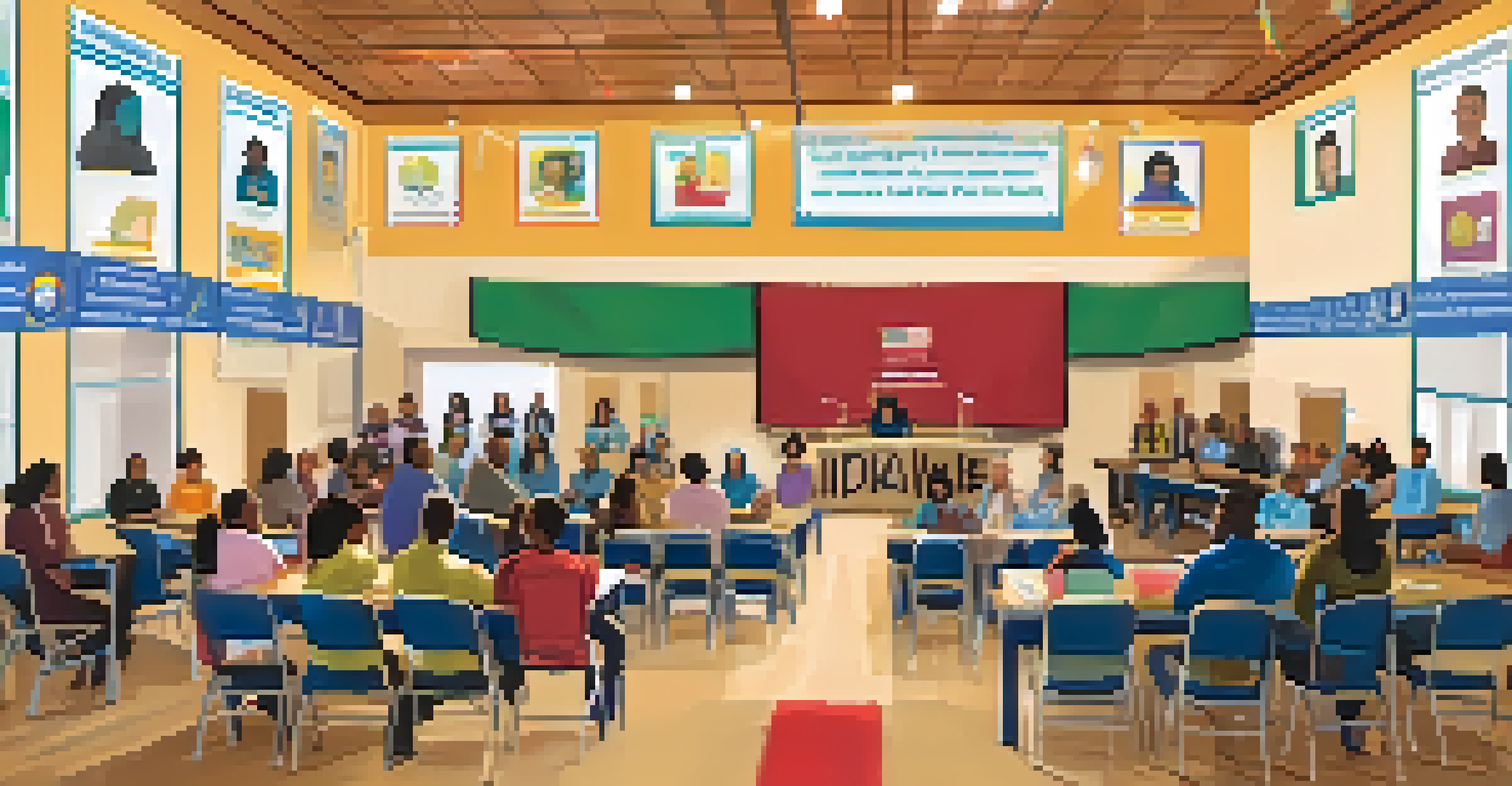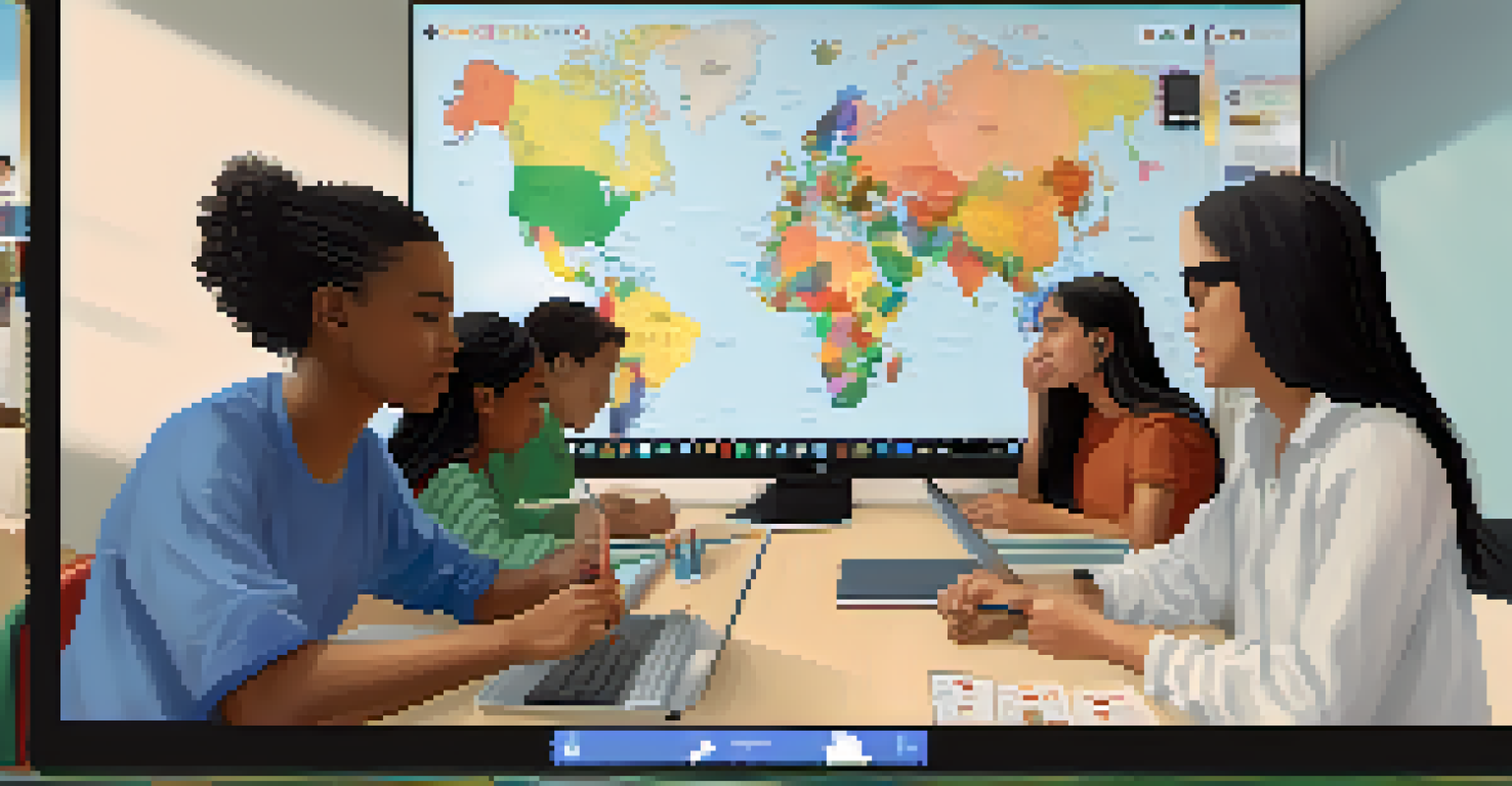Creating Pathways for Social Justice in Education

Understanding Social Justice in the Educational Context
Social justice in education refers to the fair distribution of resources, opportunities, and privileges within learning environments. It’s about ensuring that all students, regardless of their background, can succeed and thrive. By recognizing systemic inequalities, educators can begin to address the barriers that many students face.
Injustice anywhere is a threat to justice everywhere.
For instance, consider a school in a low-income area that lacks funding for advanced placement courses. This situation creates a disparity in educational opportunities, ultimately affecting students' futures. Understanding these dynamics is the first step toward creating a more equitable educational system.
Educators and administrators must commit to examining their own biases and the institutional structures that contribute to inequality. By fostering a mindset of inclusivity and awareness, we can lay the groundwork for meaningful change in our schools.
Building Inclusive Curriculum and Pedagogy
An inclusive curriculum is one that reflects the diverse backgrounds and experiences of all students. This means integrating various perspectives into lesson plans and ensuring that all voices are heard. By doing so, we create an environment where every student feels valued and represented.

For example, instead of solely focusing on Western literature, teachers can include authors from various cultures, allowing students to see themselves in the stories they read. This not only enriches the learning experience but also promotes empathy and understanding among peers.
Moreover, adopting diverse teaching strategies can cater to different learning styles, making education accessible for everyone. Whether it’s through collaborative projects, hands-on activities, or discussions, varying the approach can help bridge gaps in understanding and engagement.
Engaging Families and Communities in Education
Engaging families and communities is crucial for fostering social justice in education. When schools actively involve parents and community members, they create a support system that benefits students. This partnership can lead to a deeper understanding of the challenges students face outside the classroom.
Education is the most powerful weapon which you can use to change the world.
For instance, hosting community forums can provide a platform for families to voice their concerns and suggest improvements. This not only strengthens the relationship between the school and the community but also empowers families to participate in the educational process actively.
Additionally, schools can offer resources and workshops that help families navigate educational systems. When parents feel equipped to advocate for their children, it creates a collective effort toward achieving social justice in education.
Promoting Equity Through Policy Changes
Policy changes play a pivotal role in creating pathways for social justice in education. Advocating for policies that emphasize equity can lead to systemic transformations within school districts. This includes reallocating funding to ensure that under-resourced schools receive the support they need.
For example, implementing policies that prioritize equitable discipline practices can help reduce the school-to-prison pipeline. By rethinking how disciplinary actions are enforced, schools can create a more supportive environment that encourages student success.
Moreover, collaborating with local governments to advocate for policies that address housing, healthcare, and nutrition can create a more holistic approach to education. When students’ basic needs are met, they are more likely to succeed academically.
Fostering Critical Thinking and Dialogue
Encouraging critical thinking and open dialogue in classrooms is vital for social justice education. When students are taught to question societal norms and analyze injustices, they become empowered to advocate for themselves and others. This skill set is essential for cultivating active, informed citizens.
For instance, integrating discussions about current events or social issues into the curriculum can stimulate critical thinking. Students can explore different viewpoints and engage in respectful debates, learning to appreciate diverse perspectives.
Creating a safe space where students feel comfortable expressing their thoughts and experiences is essential. Such environments not only promote learning but also foster empathy and solidarity among students, reinforcing the principles of social justice.
Utilizing Technology for Social Justice Initiatives
Technology can be a powerful tool in promoting social justice in education. Online platforms and resources can help educators access a wealth of information and diverse perspectives. By leveraging technology, schools can provide students with innovative ways to learn and engage with social justice issues.
For example, virtual classrooms can connect students from different backgrounds, allowing them to collaborate on projects that address social issues. This not only broadens their understanding but also fosters a sense of global citizenship.
Moreover, technology can facilitate outreach efforts, helping schools connect with families and communities more effectively. By utilizing social media and other digital platforms, schools can share resources, events, and information that support social justice initiatives.
Measuring Success in Social Justice Education
Measuring success in social justice education goes beyond traditional academic metrics. It involves assessing students' growth in critical thinking, empathy, and civic engagement. By developing holistic evaluation methods, educators can better understand the impact of their efforts on students' lives.
For instance, surveys and reflections can provide insights into students' perceptions of inclusivity and equity within their school. Gathering feedback allows educators to adjust their practices and improve the learning environment continually.

Additionally, tracking long-term outcomes, such as graduation rates and community involvement, can offer a broader picture of success. By focusing on these indicators, schools can ensure they are making meaningful strides toward achieving social justice in education.